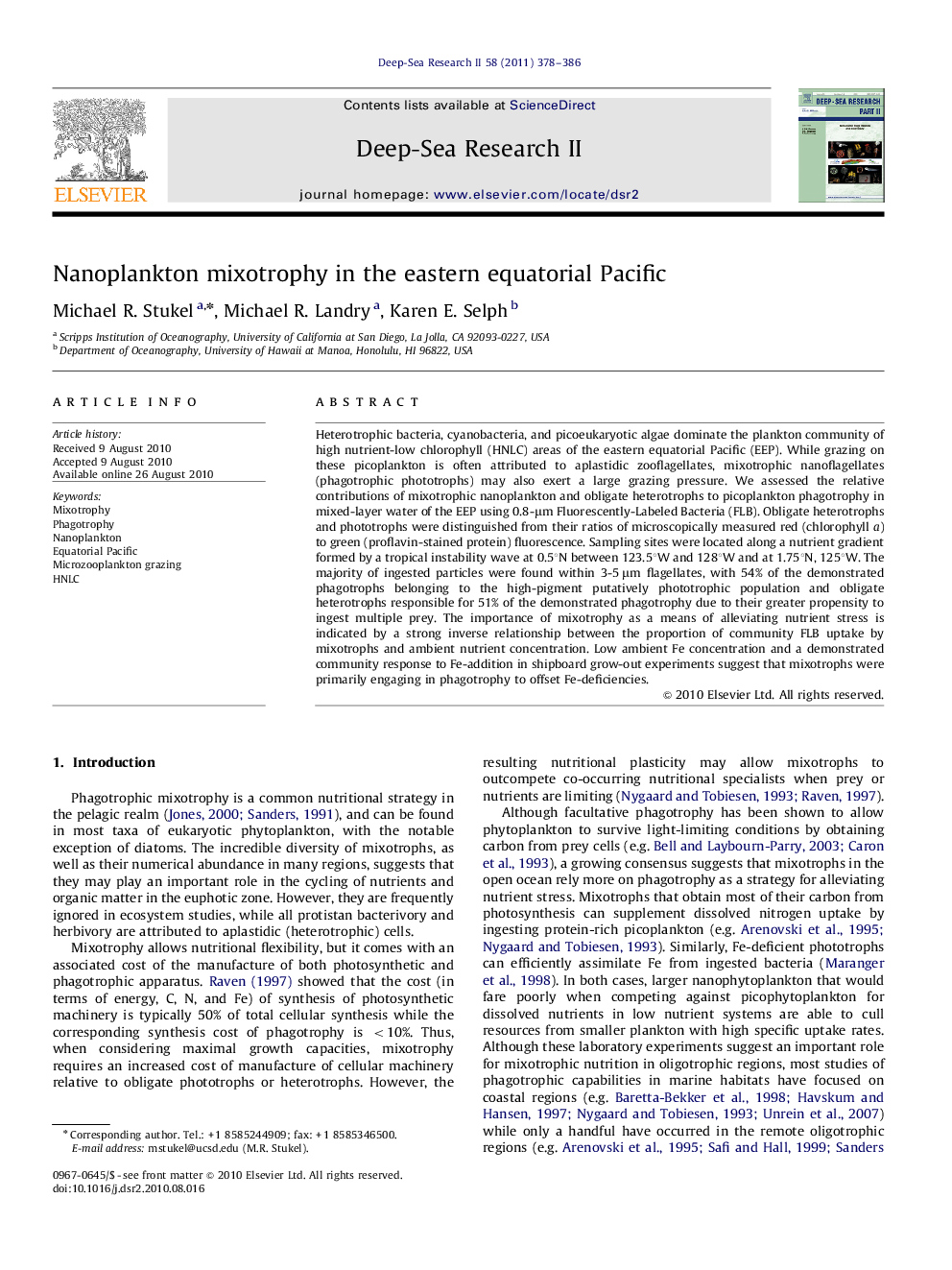| کد مقاله | کد نشریه | سال انتشار | مقاله انگلیسی | نسخه تمام متن |
|---|---|---|---|---|
| 4536974 | 1626468 | 2011 | 9 صفحه PDF | دانلود رایگان |

Heterotrophic bacteria, cyanobacteria, and picoeukaryotic algae dominate the plankton community of high nutrient-low chlorophyll (HNLC) areas of the eastern equatorial Pacific (EEP). While grazing on these picoplankton is often attributed to aplastidic zooflagellates, mixotrophic nanoflagellates (phagotrophic phototrophs) may also exert a large grazing pressure. We assessed the relative contributions of mixotrophic nanoplankton and obligate heterotrophs to picoplankton phagotrophy in mixed-layer water of the EEP using 0.8-μm Fluorescently-Labeled Bacteria (FLB). Obligate heterotrophs and phototrophs were distinguished from their ratios of microscopically measured red (chlorophyll a) to green (proflavin-stained protein) fluorescence. Sampling sites were located along a nutrient gradient formed by a tropical instability wave at 0.5°N between 123.5°W and 128°W and at 1.75°N, 125°W. The majority of ingested particles were found within 3-5 μm flagellates, with 54% of the demonstrated phagotrophs belonging to the high-pigment putatively phototrophic population and obligate heterotrophs responsible for 51% of the demonstrated phagotrophy due to their greater propensity to ingest multiple prey. The importance of mixotrophy as a means of alleviating nutrient stress is indicated by a strong inverse relationship between the proportion of community FLB uptake by mixotrophs and ambient nutrient concentration. Low ambient Fe concentration and a demonstrated community response to Fe-addition in shipboard grow-out experiments suggest that mixotrophs were primarily engaging in phagotrophy to offset Fe-deficiencies.
Journal: Deep Sea Research Part II: Topical Studies in Oceanography - Volume 58, Issues 3–4, February 2011, Pages 378–386